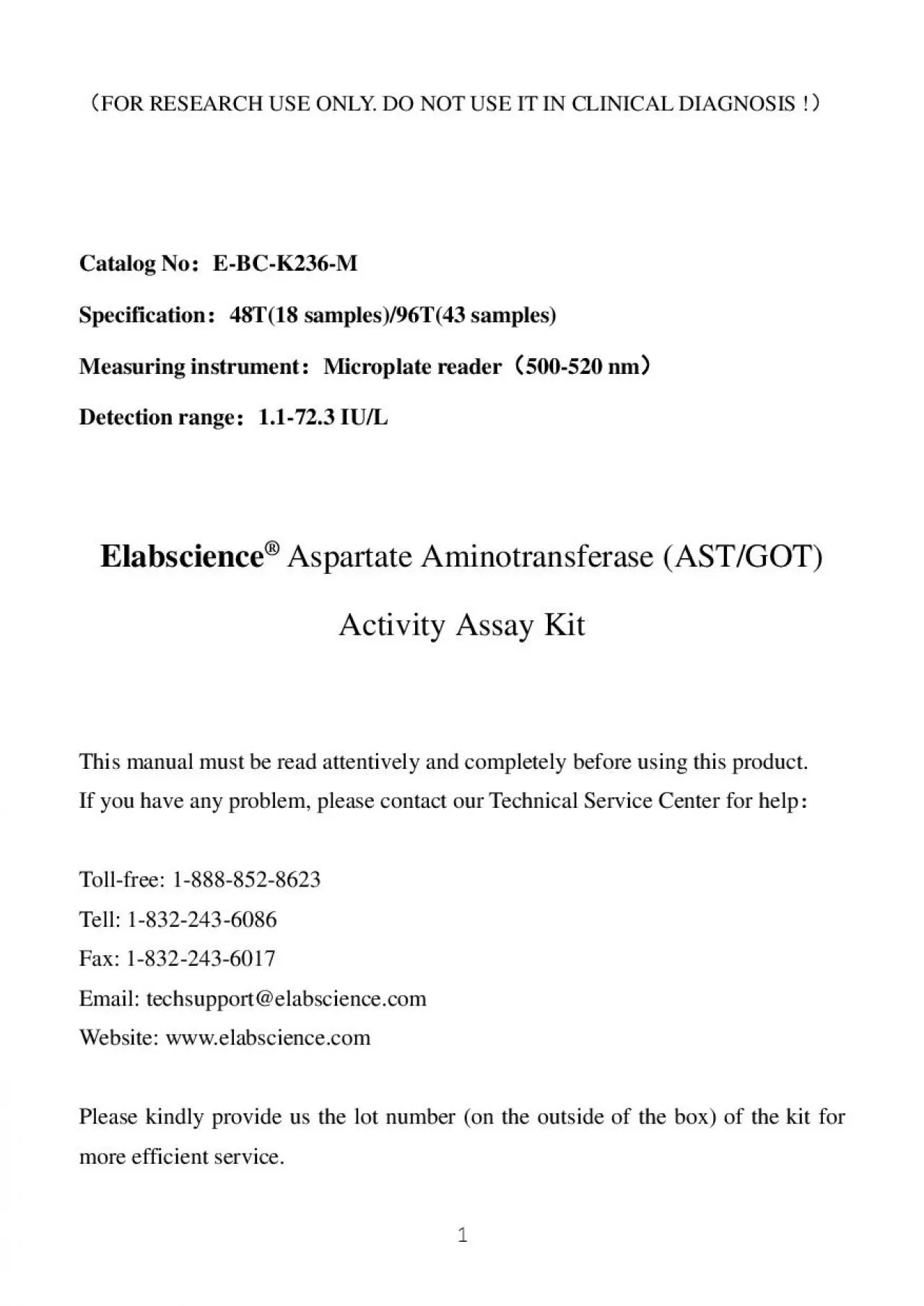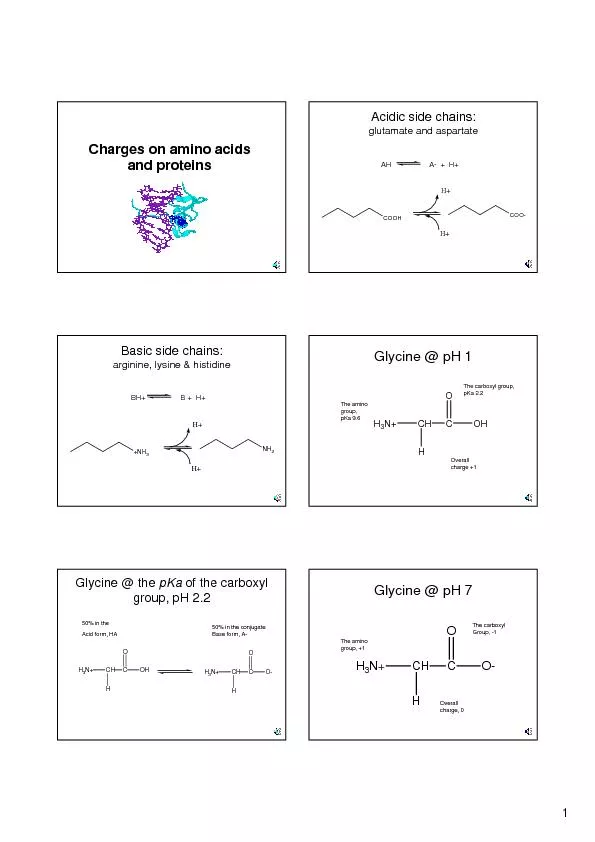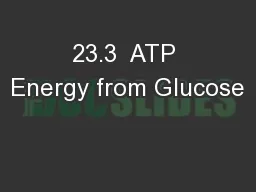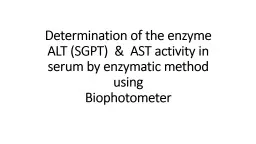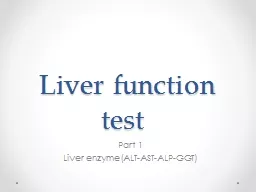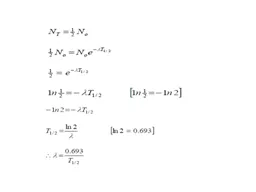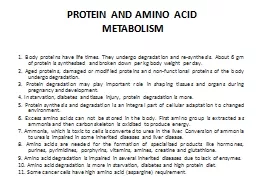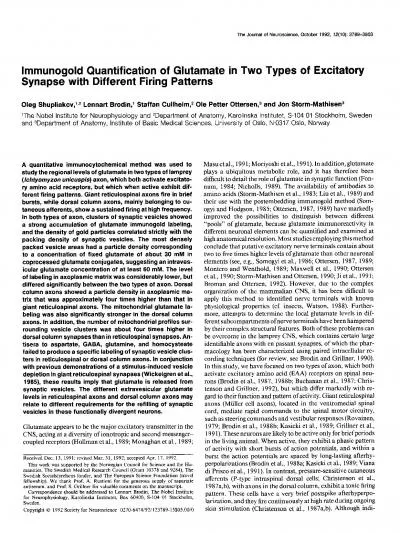PDF-Aspartate Aminotransferase ASTGOT Activity
Author : queenie | Published Date : 2022-08-16
Assay Kit ReitmanFrankel Method Please kindly provide us the lot number on the outside of the box of the kit for more efficient service Catalog No EBCK236M Method
Presentation Embed Code
Download Presentation
Download Presentation The PPT/PDF document "Aspartate Aminotransferase ASTGOT Activi..." is the property of its rightful owner. Permission is granted to download and print the materials on this website for personal, non-commercial use only, and to display it on your personal computer provided you do not modify the materials and that you retain all copyright notices contained in the materials. By downloading content from our website, you accept the terms of this agreement.
Aspartate Aminotransferase ASTGOT Activity: Transcript
Download Rules Of Document
"Aspartate Aminotransferase ASTGOT Activity"The content belongs to its owner. You may download and print it for personal use, without modification, and keep all copyright notices. By downloading, you agree to these terms.
Related Documents

